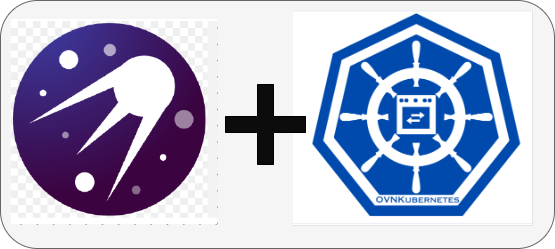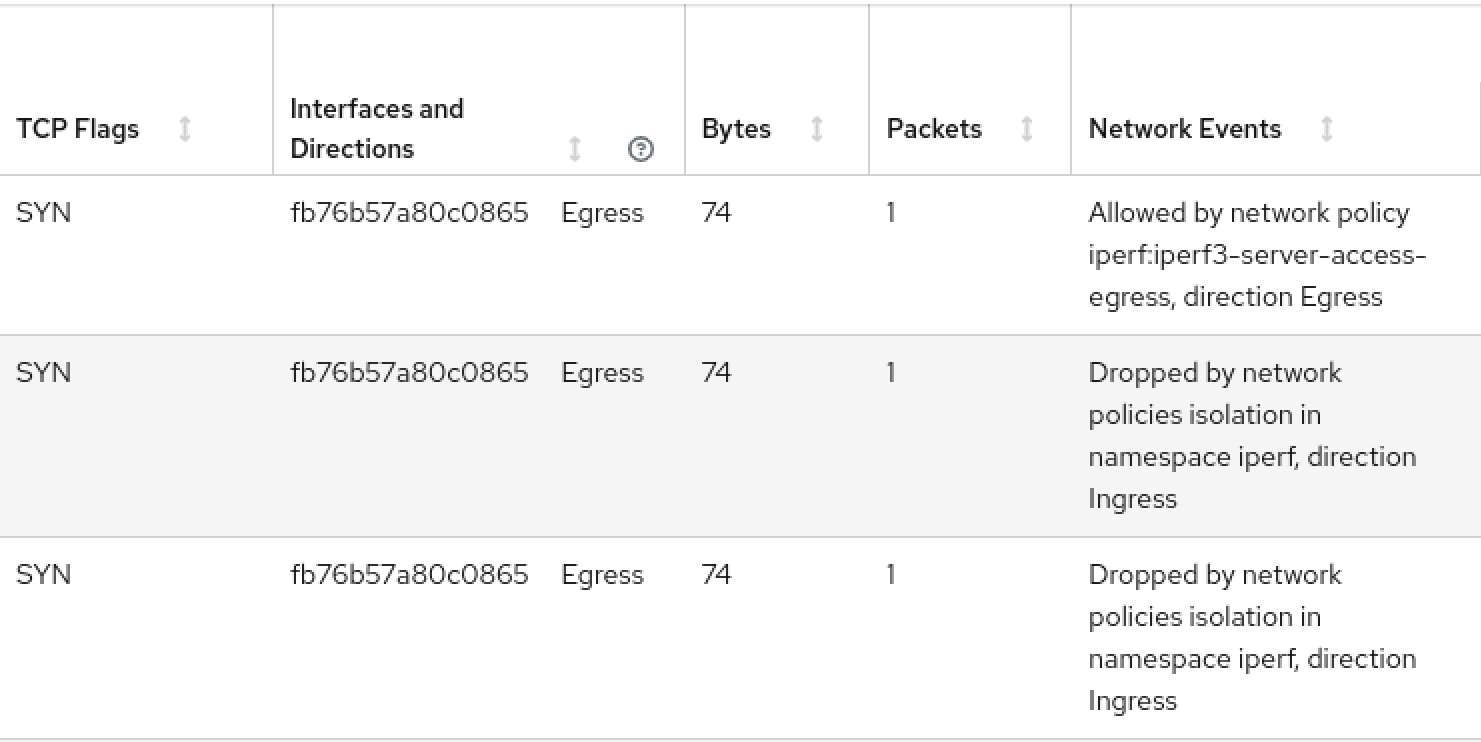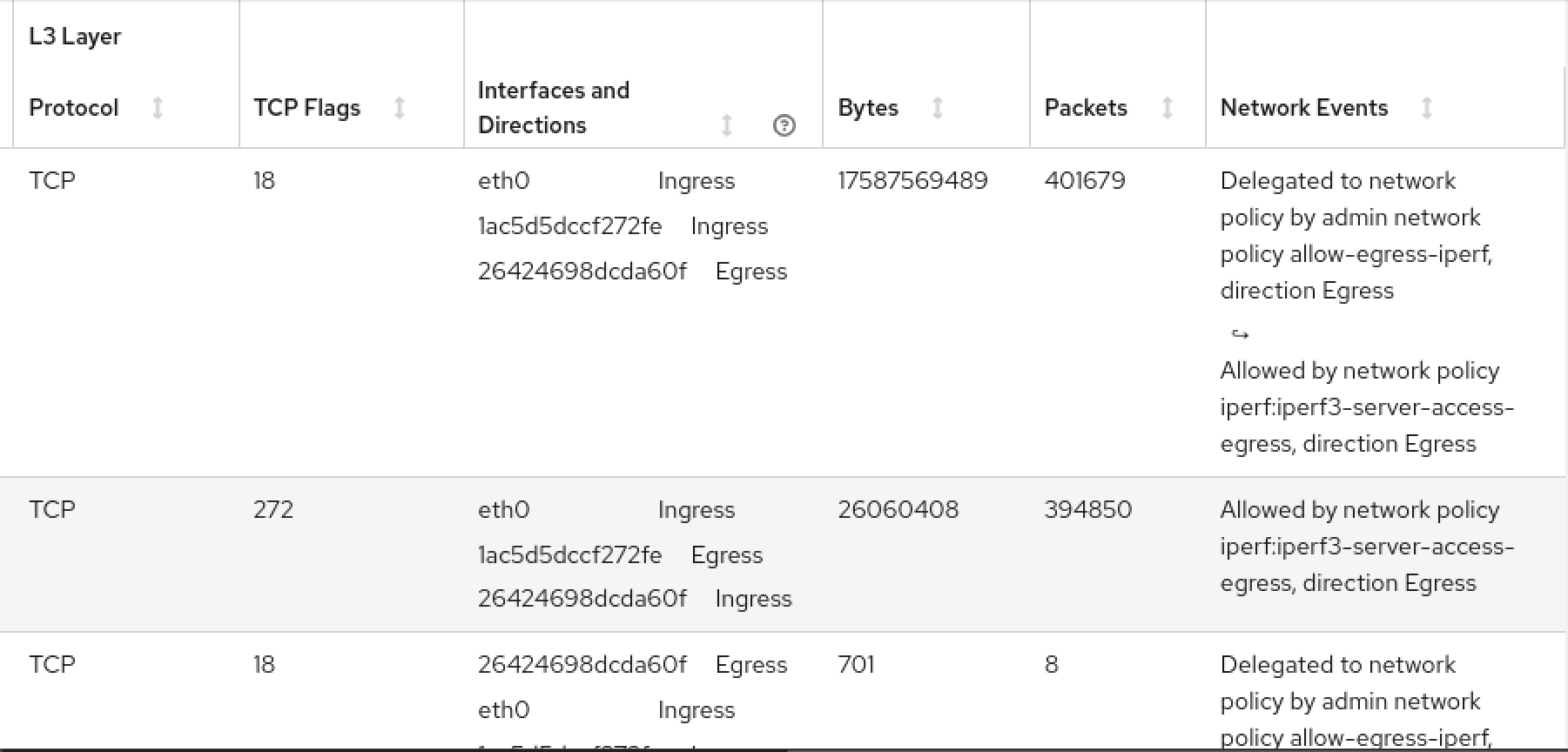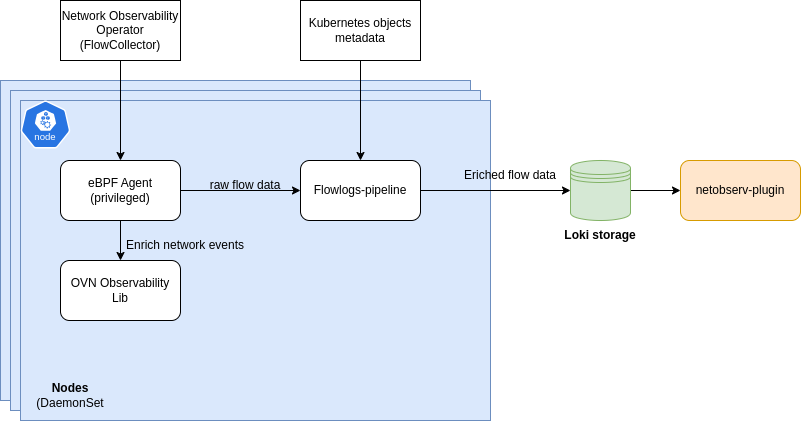Monitoring OVN Networking Events using Network Observability
Update
Check out the revised version of this post on the Red Hat developers blog: Monitoring OVN Networking Events using Network Observability.

Network security and performance maintenance crucially depend on monitoring network events triggered by OVN (Open Virtual Network), including network policies, admin network policies, and egress firewalls. You can achieve this using network observability eBPF agent, which runs in the Linux kernel and can trace various network activities with minimal performance overhead, allowing you to observe and capture detailed information about network traffic and events in real-time.
Key Components for Network Observability with eBPF
1- eBPF network events monitoring Kprobe eBPF hook
Network events monitoring using eBPF kernel probes (kprobes) provides deep, kernel-level insights into network stack behavior. The NetObserv eBPF agent leverages the psample_sample_packet entry point to efficiently capture packet metadata and identify policy violations with minimal overhead.
The hook implemented in the NetObserv eBPF agent can capture multiple events within the same network flow and generate a list of network events that applied to that flow, with a limit of up to four events per flow.
2- ovn-kubernetes observability library
The eBPF agent captures network events as an array of bytes, which is not very user-friendly. This library provides functionality to convert these events into human-readable strings, making them easily understandable for customers.
Use Cases for Network Observability with eBPF
- Monitor network policies
When you apply OVN network policies (like Kubernetes NetworkPolicy), eBPF agent can monitor allowed and/or blocked traffic, detecting whether packets are allowed or blocked based on network policies. An example of these network policies follows:
kind: NetworkPolicy
apiVersion: networking.k8s.io/v1
metadata:
name: iperf3-server-access-ingress
namespace: iperf
spec:
podSelector:
matchLabels:
app: iperf3-server
ingress:
- ports:
- port: 5501
from:
- podSelector:
matchLabels:
app: iperf3-client
---
kind: NetworkPolicy
apiVersion: networking.k8s.io/v1
metadata:
name: iperf3-server-access-egress
namespace: iperf
spec:
podSelector:
matchLabels:
app: iperf3-client
egress:
- ports:
- port: 5201
protocol: TCP
podSelector: {}
policyTypes:
- Egress

Screen capture of the traffic flows in the NetObserv console plugin, with a network events column showing traffic allowed or denied by network policy rules
- Monitor admin network Policies
An Admin network Policy is a high-level security policy designed to provide cluster administrators with more control over network traffic in Kubernetes environments. eBPF agent can monitor allowed/blocked Traffic: Detect whether packets are allowed or blocked based on admin network policies.
An Example of admin network policy and egress network policy to show multiple events use case :
apiVersion: policy.networking.k8s.io/v1alpha1
kind: AdminNetworkPolicy
metadata:
name: allow-egress-iperf
spec:
egress:
- action: Pass
to:
- namespaces: {}
priority: 10
subject:
namespaces:
matchLabels:
kubernetes.io/metadata.name: iperf
---
kind: NetworkPolicy
apiVersion: networking.k8s.io/v1
metadata:
name: iperf3-server-access-egress
namespace: iperf
spec:
podSelector:
matchLabels:
app: iperf3-client
egress:
- ports:
- port: 5201
protocol: TCP
podSelector: {}
policyTypes:
- Egress

Screen capture of the traffic flows in the NetObserv console plugin, with a network events column showing the delegation by the admin policy resulting in traffic allowed or denied
- Monitor egress firewall traffic
For egress firewall monitoring, the eBPF agent can do the following:
Trace egress traffic: Track outbound traffic and see whether it adheres to egress firewall rules. Detect unauthorized outbound connections: You can flag outbound traffic that violates egress rules.
In the following example, there are three events, one for network policy, another for admin network policy and the third for egress firewall
apiVersion: k8s.ovn.org/v1
kind: EgressFirewall
metadata:
name: default
namespace: iperf
spec:
egress:
- to:
cidrSelector: 8.8.8.8/24
type: Allow
- to:
cidrSelector: 0.0.0.0/0
type: Deny
---
apiVersion: policy.networking.k8s.io/v1alpha1
kind: AdminNetworkPolicy
metadata:
name: allow-egress-iperf
spec:
egress:
- action: Pass
to:
- namespaces: {}
priority: 10
subject:
namespaces:
matchLabels:
kubernetes.io/metadata.name: iperf
---
kind: NetworkPolicy
apiVersion: networking.k8s.io/v1
metadata:
name: iperf3-server-access-egress
namespace: iperf
spec:
podSelector:
matchLabels:
app: iperf3-client
egress:
- ports:
- port: 5201
protocol: TCP
podSelector: {}
policyTypes:
- Egress

Screen capture of the traffic flows in the NetObserv console plugin, with a network events column showing traffic allowed or denied by egress firewall rules
Integration with the Network Observability stack
eBPF Agent:
The agent manages a new kprobe hook through a configuration option.
It also registers with the OVN observability library, allowing eBPF-generated events to be enriched
into meaningful strings.
Agent User Space:
The Agent user space handles the aggregation of events for processing.
Flowlogs Pipeline:
Generated flows are transmitted over gRPC to the flowlogs-pipeline, where the flow content is enriched with Kubernetes metadata.
Loki storage and Console-plugin:
The enriched flows are then sent to Loki storage, making them available for consumption by the NetObserv console plugin. The new events are displayed in the console.
New Filtering Capability:
A filter is introduced to filter flows based on network event enrichment.

Configuration
- Enable the
OVNObservabilityfeature in theFeatureGatecustom resource.
$ oc edit featuregates.config.openshift.io cluster
spec:
featureSet: TechPreviewNoUpgrade
enabled:
- name: OVNObservability
Note: The above FeatureGate might be on by default at the time this feature becomes GA.
- Enable Network events in the Network Observability
FlowCollectorcustom resource.
apiVersion: flows.netobserv.io/v1beta2
kind: FlowCollector
metadata:
name: cluster
spec:
agent:
type: eBPF
ebpf:
sampling: 1
privileged: true
features:
- "NetworkEvents"
Note:
-
in the above example we set
samplingto 1 to be able to capture all network events without missing any. -
privilegedis set totruebecause theOVN observabilitylibrary needs to access local OVS socket and OVN databases.
Availability
The networking events monitoring feature is available as Developer Preview for OCP 4.17 z-stream and NetObserv release 1.7, and is planned for GA in OCP 4.18 and NetObserv release 1.8.
Conclusion
Relying on eBPF technology for network observability, particularly in environments governed by OVN network policies and egress firewalls, offers deep, real-time insights into network traffic. Users can monitor policy compliance, detect violations, and track detailed network flows. This helps you maintain a secure, high-performing network environment.
Feedback
We hope you liked this article ! NetObserv is an open source project available on github. Feel free to share your ideas, use cases or ask the community for help.
